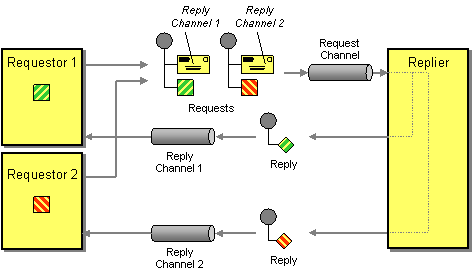Since we're on a major migration process of this website, some component documents here are out of sync right now. In the meantime you may want to look at the early version of the new website
https://camel.apache.org/staging/
We would very much like to receive any feedback on the new site, please join the discussion on the Camel user mailing list.
Return AddressCamel supports the Return Address from the EIP patterns by using the
For example when using JMS with InOut the component will by default return to the address given in Requestor Code
getMockEndpoint("mock:bar").expectedBodiesReceived("Bye World");
template.sendBodyAndHeader("direct:start", "World", "JMSReplyTo", "queue:bar");
Route Using the Fluent Builders
from("direct:start").to("activemq:queue:foo?preserveMessageQos=true");
from("activemq:queue:foo").transform(body().prepend("Bye "));
from("activemq:queue:bar?disableReplyTo=true").to("mock:bar");
Route Using the Spring XML Extensions
<route>
<from uri="direct:start"/>
<to uri="activemq:queue:foo?preserveMessageQos=true"/>
</route>
<route>
<from uri="activemq:queue:foo"/>
<transform>
<simple>Bye ${in.body}</simple>
</transform>
</route>
<route>
<from uri="activemq:queue:bar?disableReplyTo=true"/>
<to uri="mock:bar"/>
</route>
For a complete example of this pattern, see this junit test case Using This PatternIf you would like to use this EIP Pattern then please read the Getting Started, you may also find the Architecture useful particularly the description of Endpoint and URIs. Then you could try out some of the Examples first before trying this pattern out. |

